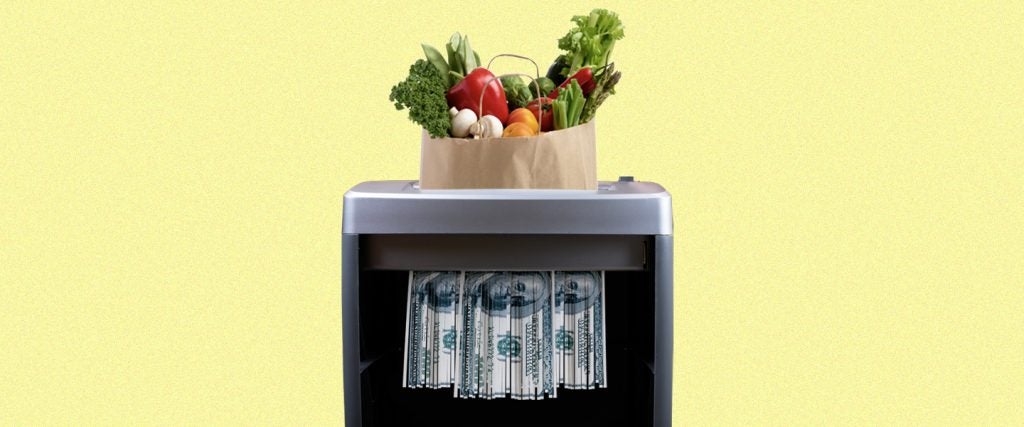It’s understandable why meal prep is widely promoted as one of the most obvious life hacks. There’s ample evidence that people who cook meals at home tend to eat healthier, and experts estimate it can save individuals up to $2,600 a year. But when you consider the time, labor and skill set required to execute quality meals, the math doesn’t always add up. In fact, plenty of people end up spending more money, not to mention wasting a ton of time and food, in their attempts to eat better on a budget.
Take Jeannie Assimos, for instance, who recently spent $75 at Whole Foods trying to make a simple chicken stir fry with vegetables. And even though she got about four portions out of it, by the third one, she was so tired of chicken that she threw the rest away. For her, the more economical move was picking up that same meal from Hugo’s, a local restaurant down the street from her in Fremont, California, for $20. This way, she got two fresh portions and zero food waste. Even if she ordered that meal again, she’d have roughly the same amount of food for $40, and she didn’t have to worry about shopping, chopping and cooking.
“Every time I go to the market to get stuff to make for a meal, I spend double the amount if I just ordered something similar for delivery,” Assimos tells me. Ultimately, she found it to be a better use of her time to research affordable local restaurants that served healthy meals and figure out ways to save money on takeout, like skipping delivery. Pretty soon, she came to the conclusion that “it’s no longer cheaper to go to the grocery store and cook at home.”
Touring musician Jaik Willis had a similar experience when the pandemic hit. After living out of a suitcase for the better part of 20 years, he finally found himself in one place with a kitchen. “I legit almost cried in the freezer aisle at Trader Joe’s for the first time taking in all the new options,” he laughs. Unfortunately, it wasn’t long before he wanted to cry about the overhead required to become a home cook.
Whether it was for his well-intended healthy meals or simply “wasteful spending on the ice cream aisle and random shelf-fillers,” Willis inevitably spent more money on food than he ever did eating takeout — about $75 to $100 for every $15 to $20 he’d have spent at a restaurant. “They also turn around a better end product because the restaurant is buying in bulk and cranking out food in bulk, so their greens don’t hang out long enough to spoil,” Willis says. And all of that is without the cookware, kitchen appliances and raw materials needed to make something he might just burn and end up throwing away.
Plus, when Willis figures in the time spent grocery shopping and cooking, he estimates he spends about two hours a day doing meal prep. If you put a value on that time, taking the minimum wage, which is $15 in Illinois where he resides, “it costs more just in time for food prep than the meal itself costs,” he reasons. So now if he wants to be healthy and economical, he opts for a local fish spot, where he can get fresh protein, vegetables and a grain for $13. Willis also saves money on takeout by avoiding high-end spots and ordering meals that he can stretch to two portions and keep for another day.
Even for the most experienced grocery shoppers and meal preppers, like say, working moms, takeout can still win out. Robyn Malcom, a full-time sales director and parent of a one year old, has found this issue to be particularly acute with homemade pizzas. Ordering two 18-inch pizzas for pickup with whatever she wants on them runs her about $30, whereas homemade pizza can be “a real runaway train.” A few times, Pizza Sundays have spiraled into an eight-hour workday that costs her easily over $60 to get a mere two 12-inch pizzas just right. (Malcom resides on the fancy side of the toppings spectrum.)
As much as Malcom likes cooking all day on a special occasion, she sees homemade pizza as more of a home project than meal prep. Like cleaning out a closet, it’s satisfying when it’s over and good to do a few times a year, but “I always get in way over my head.” So unless all the pizza places nearby suck, which isn’t an issue for Malcom in suburban Chicago, she only recommends making homemade pizza if you really love throwing dough in the air or sweeping up flour from your floor. If those activities don’t sound enticing, and you really just want a cheesy slice, it’s time to put down the rolling pin and just pick up the phone.

